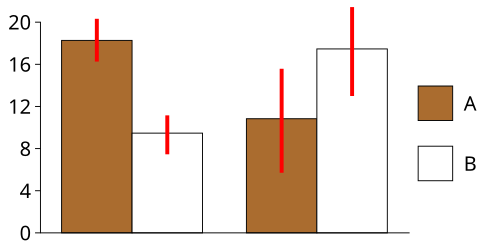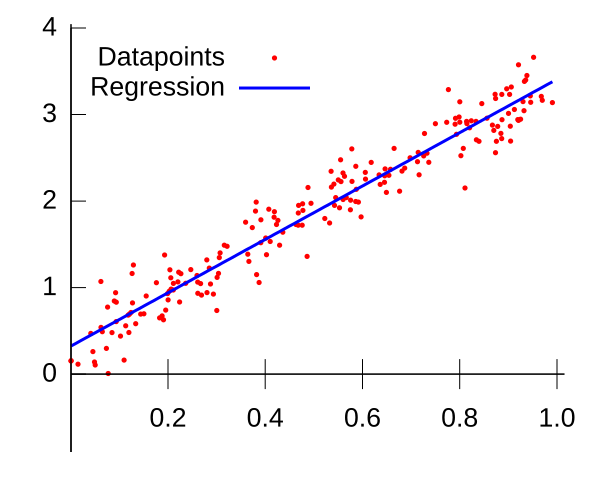OCR Specification focus:
‘Apply appropriate mathematical skills to analyse quantitative data as listed in the specification’s mathematical requirements for the course.’
Analysing experimental data in A-Level Physics requires applying mathematical skills accurately to identify relationships, test predictions, and quantify physical principles. Mastery of these skills ensures data is interpreted correctly and scientific conclusions are valid.
Core Mathematical Applications in Physics
Mathematical analysis transforms raw experimental data into meaningful physical relationships. It allows students to move from observation to quantitative understanding, testing theoretical models against measured evidence.
Key Mathematical Skills
OCR expects candidates to:
Use algebraic manipulation to rearrange equations.
Apply ratios, fractions, and percentages in data interpretation.
Employ standard form, prefixes, and unit conversions correctly.
Calculate and interpret gradients and intercepts from graphs.
Analyse proportional relationships between variables.
Perform statistical analysis for evaluating data reliability.
Algebraic Manipulation and Rearrangement
Most physical relationships involve equations connecting multiple variables. Accurate rearrangement ensures correct substitution and computation.
Common operations include:
Rearranging equations to isolate a specific variable.
Combining or substituting equations to eliminate unknowns.
Checking dimensional consistency after rearrangement.
EQUATION
—-----------------------------------------------------------------
Ohm’s Law (V) = I × R
V = Potential difference (volt, V)
I = Current (ampere, A)
R = Resistance (ohm, Ω)
—-----------------------------------------------------------------
Rearranging this equation, for example, enables the calculation of current from known voltage and resistance values. This reinforces the importance of algebraic fluency in experimental work.
Ratios, Proportions, and Percentage Change
Physics often explores how one quantity changes relative to another. Recognising proportionality is vital for deducing underlying laws.
Proportional Relationship: When two quantities vary so that their ratio remains constant (e.g. y ∝ x).
These skills are used when analysing data such as current–voltage graphs or temperature–resistance trends.
Students should be able to:
Express proportional relationships as equations, e.g. y = kx.
Identify inverse and square relationships, e.g. y ∝ 1/x or y ∝ x².
Calculate percentage change to compare data points or assess accuracy.
EQUATION
—-----------------------------------------------------------------
Percentage Change (%) = (Change / Original Value) × 100
Change = Difference between two measured or calculated quantities
Original Value = Baseline measurement or theoretical value
—-----------------------------------------------------------------
This allows comparisons across trials and assessment of trends.
Handling Units and Prefixes
Correct unit usage is a foundation of reliable analysis. Every derived quantity must be expressed in SI units to maintain consistency.
Common SI Prefixes
milli (m) = 10⁻³
micro (µ) = 10⁻⁶
kilo (k) = 10³
mega (M) = 10⁶
Students must convert units consistently before performing calculations or plotting graphs. For example, converting milliamperes to amperes or centimetres to metres avoids scaling errors in derived values.
Graphical Analysis of Quantitative Data
Graphs reveal patterns and relationships hidden within numerical data, serving as a powerful tool for interpreting results.
Constructing Graphs
When plotting data:
Place the independent variable on the x-axis and dependent variable on the y-axis.
Label both axes with quantities and units.
Use scales that allow easy reading and minimise uncertainty.
Include error bars where appropriate.

A column chart with red vertical confidence-interval bars showing how uncertainty is represented around point estimates. Such bars can indicate standard deviation, standard error, or confidence intervals, illustrating how data reliability is visualised in physics graphs. Source
Interpreting Graphs
Identify linear relationships and determine the gradient.

A scatter plot with a straight regression line illustrating how experimental data are modelled linearly. The gradient represents the physical constant derived from the relationship, while the intercept shows any fixed offset. Both axes are labelled clearly to highlight correct unit usage. Source
Use the intercept to infer constants or offsets in equations.
Apply line of best fit to estimate underlying relationships.
EQUATION
—-----------------------------------------------------------------
Gradient (m) = Δy / Δx
Δy = Change in the dependent variable (unit depends on variable)
Δx = Change in the independent variable (unit depends on variable)
—-----------------------------------------------------------------
Gradients are crucial for deriving quantities such as resistance, spring constant, or acceleration.
Use of Logarithmic and Power Relationships
Some data produce non-linear graphs. By taking logarithms, these can often be linearised for easier analysis.
Logarithmic Transformation: A method of converting exponential or power relationships into a linear form by taking logarithms of variables.
For instance, if y ∝ xⁿ, then plotting log(y) against log(x) gives a straight line with gradient n.

A comparison of graphs plotted on original and log–log scales. On log–log axes, power-law relationships appear as straight lines whose gradient equals the exponent, demonstrating the process of linearising non-linear data in experimental analysis. Source
Recognising and applying these transformations demonstrates deeper understanding of physical laws.
Statistical Treatment of Data
Statistical methods enhance confidence in experimental results by quantifying variability and uncertainty.
Mean and Range
Calculating the mean of repeated measurements reduces random error, while the range indicates the spread of data.
EQUATION
—-----------------------------------------------------------------
Mean (x̄) = Σx / n
Σx = Sum of all measurements (unit depends on quantity)
n = Number of measurements
—-----------------------------------------------------------------
Students should also understand the standard deviation as a measure of data spread around the mean.
Evaluating Reliability
Identify outliers that deviate significantly from the mean.
Use error bars to represent uncertainty visually.
Compare overlapping error ranges to assess significance of differences.
Mathematical Modelling and Linearisation
Physical data often follow models that can be simplified through linear equations for ease of analysis.
Linearisation Process
Start from a known physical relationship (e.g. Hooke’s law, Boyle’s law).
Rearrange the formula to match y = mx + c form.
Plot appropriate variables to yield a straight-line graph.
Interpret gradient and intercept in terms of physical constants.
Linear Relationship: A relationship between two variables where one variable changes at a constant rate with respect to the other, forming a straight-line graph...
Understanding how to linearise data ensures accurate determination of constants such as resistivity or spring stiffness.
Dimensional Analysis
Dimensional analysis acts as a consistency check, confirming whether an equation or rearrangement is physically valid.
EQUATION
—-----------------------------------------------------------------
Dimensional Consistency: [Quantity] = [Base Units]
Example: Force = mass × acceleration
F = kg × m s⁻² = kg·m·s⁻²
—-----------------------------------------------------------------
If dimensions on both sides of an equation match, the expression is likely correct, though not guaranteed numerically accurate.
Use of Ratios and Proportional Reasoning in Experiments
When analysing experimental outcomes, proportional reasoning provides insight into how changing one variable influences another. This is particularly important when direct measurement is difficult.
Students must:
Recognise direct, inverse, and square proportionalities.
Calculate ratios to compare multiple experiments.
Use normalised data to remove dependency on absolute magnitudes.
Final Emphasis on Mathematical Precision
Applying mathematical skills correctly ensures that physical interpretations are quantitatively justified. The OCR specification emphasises precise manipulation of numbers, equations, and data presentation as core competencies for all experimental and analytical work. Mastery of these mathematical foundations enables the clear, confident evaluation of physical systems and reliable evidence-based conclusions.
FAQ
Choosing a mathematical model depends on recognising the underlying relationship between variables. Start by plotting the data to look for linear, quadratic, or inverse trends.
If the data are curved, transformations such as plotting 1/x, x², or using log–log or semi-log graphs can reveal whether a power or exponential relationship exists.
Select the model that gives the most consistent gradient and passes close to the data points, ensuring it has a clear physical meaning in the context of the experiment.
In A-Level analysis, a line of best fit is drawn by eye to balance the scatter of data points evenly above and below the line.
A trend line, often used in computer-generated plots, represents a statistically fitted mathematical model — for example, linear regression or polynomial fit.
While both show relationships, the line of best fit is an approximation based on judgement, whereas the trend line is calculated numerically from the data.
Linearisation simplifies the interpretation of non-linear data by allowing straight-line techniques to be used.
Once data are linearised:
The gradient gives the exponent or rate of change in the relationship.
The intercept may represent a constant such as resistance or threshold voltage.
This method also helps in identifying systematic errors and comparing data sets because linear trends are easier to quantify mathematically.
To reduce uncertainty in gradient determination:
Use the largest possible triangle when calculating gradient (Δy/Δx).
Draw lines and read values with fine, accurate scales.
Ensure both axes are properly scaled with SI units.
Replot data or repeat measurements to confirm linearity.
Minimising random scatter and using well-chosen scales greatly improves precision and reliability in gradient-based calculations.
Use logarithmic axes when data span several orders of magnitude or when power-law or exponential relationships are expected.
For example:
In inverse-square law or radioactive decay data, logs help linearise the relationship.
Log–log graphs identify power relationships; semi-log graphs reveal exponential behaviour.
Log scales also make small variations in large data sets easier to visualise while maintaining proportional spacing between data points.
Practice Questions
Question 1 (2 marks)
A student records the extension of a spring when different masses are added. The plotted graph of extension against load gives a straight line passing through the origin.
(a) Explain what the straight-line relationship indicates about the proportionality between extension and load.
Mark Scheme:
1 mark: States that extension is directly proportional to the load.
1 mark: Explains that doubling the load doubles the extension (or equivalent statement showing proportional reasoning).
Question 2 (5 marks)
An experiment investigates how the current through a filament lamp varies with the potential difference (p.d.) across it. The student records several pairs of readings of current and p.d. and plots a graph of p.d. (V) on the y-axis against current (A) on the x-axis.
(a) Describe how the student can determine the resistance of the lamp at a particular current value using the graph. (2 marks)
(b) Explain how the student could use mathematical analysis of the data to identify whether the lamp obeys Ohm’s law. (3 marks)
Mark Scheme:
(a)
1 mark: Recognises that the resistance at a point is given by the gradient (V/I) of the graph at that point.
1 mark: States that the student can draw a tangent to the curve at the required current and calculate its slope to find resistance.
(b)
1 mark: States that if the graph is a straight line through the origin, the lamp obeys Ohm’s law (constant resistance).
1 mark: Notes that a curved graph means resistance changes with current, showing non-ohmic behaviour.
1 mark: Uses mathematical reasoning — e.g. calculating several V/I ratios and showing that they vary with current — to justify the conclusion.

